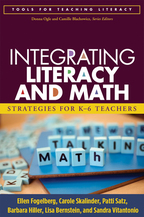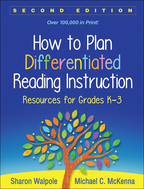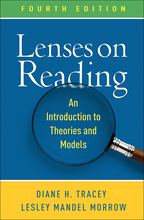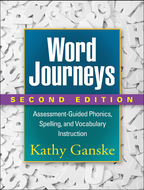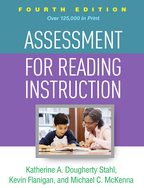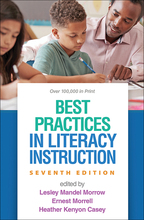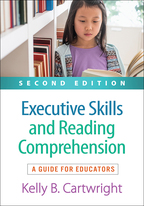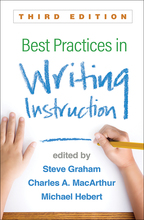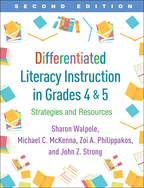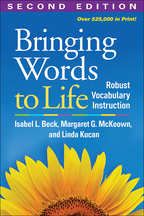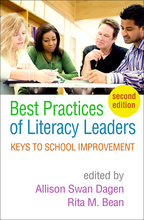Integrating Literacy and Math
Strategies for K-6 Teachers
Ellen Fogelberg, Carole Skalinder, Patti Satz, Barbara Hiller, Lisa Bernstein, and Sandra Vitantonio
Paperbacke-bookprint + e-book
Paperback
orderMay 6, 2008
ISBN 9781593857189
Price: $33.00184 Pages
Size: 7" x 10"
“This book shows us myriad ways in which literacy and math are connected, and provides engaging and practical ways to take advantage of these connections in teaching. The authors combine the realities of classroom practice, insights from research, a reflective approach, and a heavy measure of creativity to develop innovative frameworks and practices that can take mathematics and literacy education to the next level. I want our preservice teachers to read this book to truly understand that literacy education is about so much more than traditional reading and writing instruction. I want inservice teachers to read this book to help them break down some of the artificial boundaries that constrain their teaching, and their students' learning. Finally, I want researchers to read this book to learn about cutting-edge classroom strategies that are well worth studying.”

—Nell K. Duke, EdD, Professor of Language, Literacy, and Culture, University of Michigan
“Integrating Literacy and Math is an excellent resource for both preservice and inservice teachers striving to strengthen the link between mathematics and literacy. Educators at the elementary level will find a multitude of concrete examples for each of the authors’ suggestions. Essential research that supports the practical ideas contained in the text is clearly noted, making this book a valuable contribution.”

—Jennifer L. Altieri, PhD, Coordinator, Division of Literacy Education, The Citadel
“This is a practical resource that has been written with the classroom teacher (or teacher-to-be) in mind. It includes numerous examples of what mathematical discourse sounds like at a variety of grade levels. Many elementary teachers are more comfortable teaching literacy; this book builds needed bridges between literacy and the language of math.”

—Kristen Campbell-Wilder, MA, CAGS, teaching specialist, Breakthrough Magnet School, Hartford, Connecticut
“The authors provide models from actual classrooms of interdisciplinary, student-centered approaches that make math more accessible. They describe an engaging, language-rich environment that benefits all students, including English language learners and special education students. The methods illustrated in the book encourage risk taking among students as they develop and communicate mathematical understanding and build the skills to become lifelong problem solvers.”

—Christopher Love, MAT, math content coach, Montgomery County Public Schools, Maryland
—Nell K. Duke, EdD, Professor of Language, Literacy, and Culture, University of Michigan
“Integrating Literacy and Math is an excellent resource for both preservice and inservice teachers striving to strengthen the link between mathematics and literacy. Educators at the elementary level will find a multitude of concrete examples for each of the authors’ suggestions. Essential research that supports the practical ideas contained in the text is clearly noted, making this book a valuable contribution.”
—Jennifer L. Altieri, PhD, Coordinator, Division of Literacy Education, The Citadel
“This is a practical resource that has been written with the classroom teacher (or teacher-to-be) in mind. It includes numerous examples of what mathematical discourse sounds like at a variety of grade levels. Many elementary teachers are more comfortable teaching literacy; this book builds needed bridges between literacy and the language of math.”
—Kristen Campbell-Wilder, MA, CAGS, teaching specialist, Breakthrough Magnet School, Hartford, Connecticut
“The authors provide models from actual classrooms of interdisciplinary, student-centered approaches that make math more accessible. They describe an engaging, language-rich environment that benefits all students, including English language learners and special education students. The methods illustrated in the book encourage risk taking among students as they develop and communicate mathematical understanding and build the skills to become lifelong problem solvers.”
—Christopher Love, MAT, math content coach, Montgomery County Public Schools, Maryland

